Scientists were Stalin's ammunition in the fight against the rotten capitalist West. Their great discoveries were to prove to other countries the power of the Soviet Union. But in the hands of the Red Tsar and his successors, even Nobel Prize winners, though useful in propaganda, were only passive tools.
They were needed to build the image of a thriving state, to divert attention from failures on the fronts, to cover up crimes with scientific successes and, perhaps most of all, revolutionary inventions that would help to gain power over the world.
Stalin and his people wanted specific effects - new bombs, rocket engines or radar devices - write Marta and Andrzej Goworski in the book "Scientists from under the red star".
Therefore, even when hunger was raging in the Land of the Soviets and most of the society was poor, money was not skimpy on modern research institutions, and eminent scientists, compared to the rest of the population, could feel almost spoiled. As long as they conformed to the Bolshevik "rules of the game."
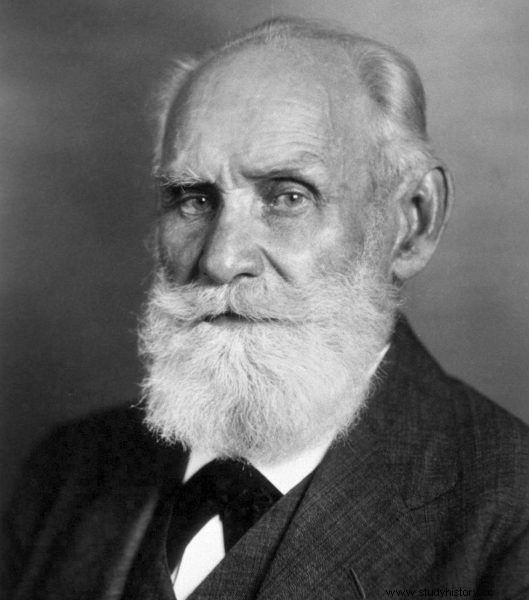
The Bolsheviks were not interested in whether the Nobel laureate Ivan Pavlov had the means of livelihood and the conditions for scientific work. Until he wanted to go abroad… (public domain).
Ivan Pavlov. You were slow to win more
Researchers whose success had a global dimension enjoyed special treatment. If their name was extremely prestigious, they could afford a little more in front of the authorities . This was the case with the first Russian Nobel Prize winner, Ivan Pavlov.
Since the Bolshevik Revolution, Pavlov lived, like most of his countrymen, on the brink of poverty. Worse, he couldn't continue his research.
Lack of funds for the maintenance of the laboratories themselves, radical staff cuts (he had one out of several dozen employees in 1920), problems with the power supply effectively prevented him from working so far - write Marta and Andrzej Goworski in the book "Scientists from under the red star".
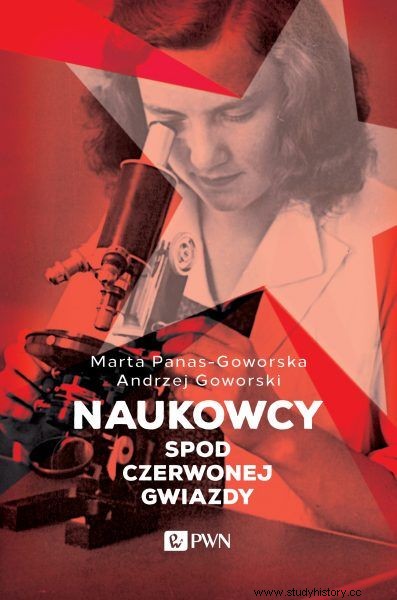
The situation of the eminent physiologist changed radically when he asked the Bolsheviks (whom, by the way, he sincerely despised) for permission to leave the country. This coincided with a letter sent by the Swedish Red Cross asking for Pavlov's release abroad in exchange for humanitarian aid.
The researcher's propaganda value has unexpectedly increased - say Marta and Andrzej Goworski. In this situation, the Soviet authorities decided to fight for the Nobel laureate - (...) we are giving not one, but dozens of packages [food] , we are building an institute unlike anything the world has ever seen, and in addition we print all the works of Ivan Petrovich on biblical tissue paper.
This did not change Pavlov's opinion about the Bolsheviks. He spoke publicly about the mistakes and distortions of the USSR. Well, he has gone much further!
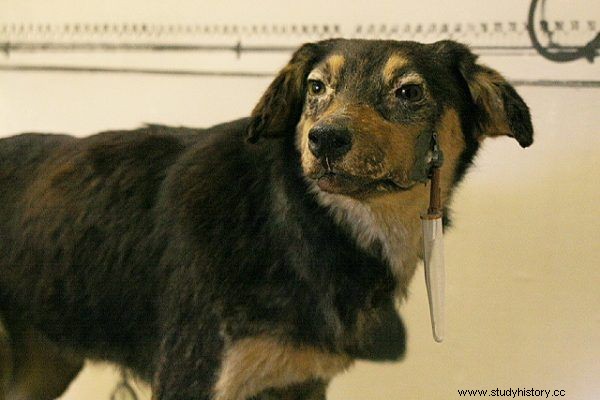
It's good that Pavlov did not think to lash the envoys of power with his dogs ... In the photo one of the scientist's dogs, crafted and placed in the Pavlov Museum in Ryazan (author:Rklawton, license:CC BY-SA 3.0).
When, after Lenin's death, Stalin cracked down on former supporters of "whites", the purges did not bypass the scientist's laboratory. Here, however, they ran differently than in the rest of the country. Sent to the canine kingdom, Soviet cleaners from the threshold were thrown out by a bloody old man - we read in "Scientists from under the red star".
When in 1933 the head of the academic section to fight the "anti-Soviet element" knocked on Pavlov's door, the Nobel Prize winner then shouted "won swołocz" and threw the uninvited guest down the stairs . And he was not punished for it!
The Goworskis, however, claim that the conflict between Pavlov and the government was highly theatrical. Both sides needed each other, and the scientist ultimately fulfilled his propaganda role well, occasionally praising some of the achievements of his homeland and of Stalin himself.
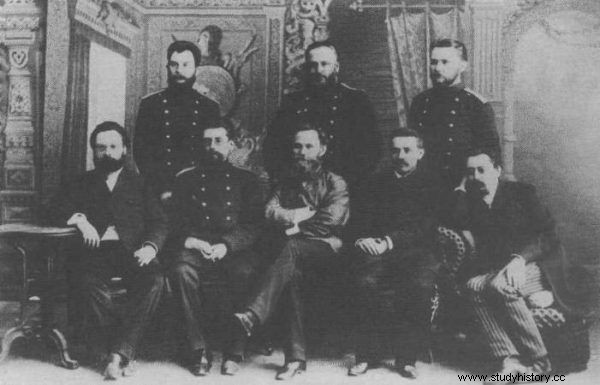
Ivan Pavlov (seated in the center) surrounded by his PhD students from the Military Medical Academy in Saint Petersburg (1891) (public domain).
Lew Landau. Don't go over a certain limit!
Much more serious was the fault of another scientist against the red decision makers. And the Soviet government reacted proportionately more brutally.
Born in 1908 to a Jewish family, the later Nobel Prize winner Lew Landau, from an early age, displayed an unusual sharp mind. He began his studies at the university in Baku at the age of fourteen. After two years of study, with congratulations and excellent references from the dean of the faculty of mathematics and physics, he left for Leningrad to develop his interest in physics at the university there.
Landau was as brilliant as he was eccentric . Instead of suits, he preferred flowery shirts, called everyone "you", (...) played the trumpet in a student jazz band and walked around Nevsky Prospect with a red balloon. His lifestyle irritated the scientific environment, but it did not overshadow the benefits that Soviet science could achieve from his outstanding mind.
He was sent abroad, where he met the greatest scientists of the time:Albert Einstein, Werner Heisenberg, Niels Bohr and his compatriot working in Cambridge, Piotr Kapica.
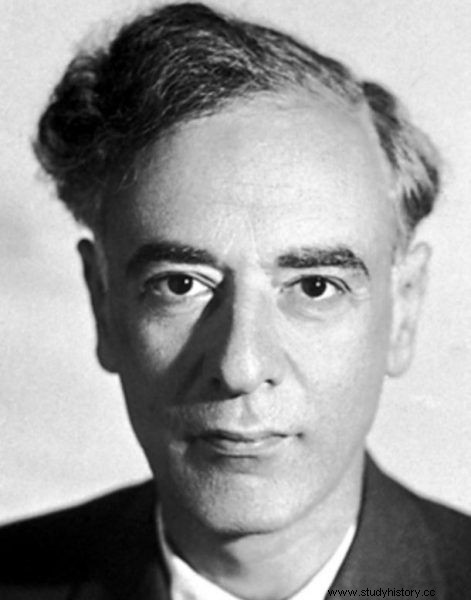
Lew Landau was considered an enfant terrible Soviet science. One could turn a blind eye to his extravagance ... but not to compare Stalin to Hitler! (public domain).
Although he could pick and choose between offers, he decided to return to his homeland. In Kharkiv, he took the position of head of the theory department of the Physico-Technical Institute and soon transformed it into one of the most important research institutions in the world.
Useful Tool
Artificially induced famine raged in Ukraine. Deprived of food, people would come to Kharkiv and die right in the streets. Despite the monstrous dimensions of the tragedy, the West knew little about it - partly because the scale of the misfortunes was beyond mind, partly because of propaganda and "useful idiots."
Unknowingly, Landau played a shameful role in this process - it was his authority that attracted foreign researchers to Kharkiv scientific conferences, including Niels Bohr, a Nobel laureate. Guests were shown a Potemkin model of the city, which completely obscured the nightmarish truth. This strengthened in the eyes of international opinion the Stalinist version of a happy country of workers and peasants.
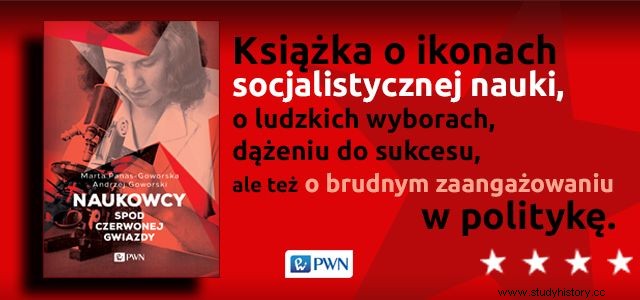
In the end, however, Lew Landau got into trouble . Living in the world of physical theories, he had little to do with reality. However, he was an uncompromising man and eventually opposed the cruel policy of the decision makers. His protest consisted in signing a letter contesting the actions of the authorities z. Soon the signatories of this document began to be arrested - we read in "Scientists from under the red star".
He got a dismissal. He escaped from Kharkiv and joined Moscow at the Institute of Physical Problems led by Piotr Kapica. But he didn't learn anything. Marta and Andrzej Goworski write:
In April, received a pamphlet comparing Stalin to Hitler from one of his colleagues . He agreed with the theses contained therein and readily made his own changes to the text, and then passed the paper on. Within days, the men entered his apartment in black coats and by arm they pulled him out of the office.
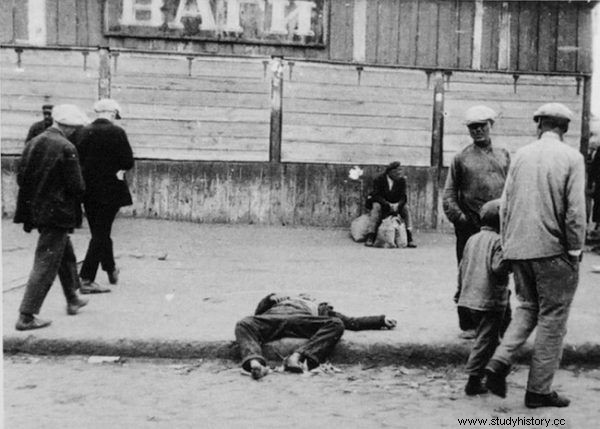
People were starving in the streets of Kharkiv. But this is what the foreign scientists who came to the city for the conferences did not see ... (author:Alexander Wienerberger, public domain).
There was no news of him for a year . Both Bohr and Kapica sought the release of Landau from Stalin. Pragmatism won - the scientist was the missing link in the Soviet nuclear program. Before he was released, he was cured in the hospital for a month, and when she saw him, his wife exclaimed: Dear, my dear, what happened to your hands!
Piotr Kapica. Lured by the trick
Like Landau, also Piotr Kapica, an outstanding physicist and later Nobel Prize winner, got a chance to broaden his knowledge abroad. However, , unlike Landau, he developed a taste for foreign travels and in 1921 did not return from a scholarship to Cambridge.
Working under the supervision of another Nobel laureate, Ernest Rutherford, in the most modern research center in the world at the time, Kapica was successful and did not think about returning to his homeland.
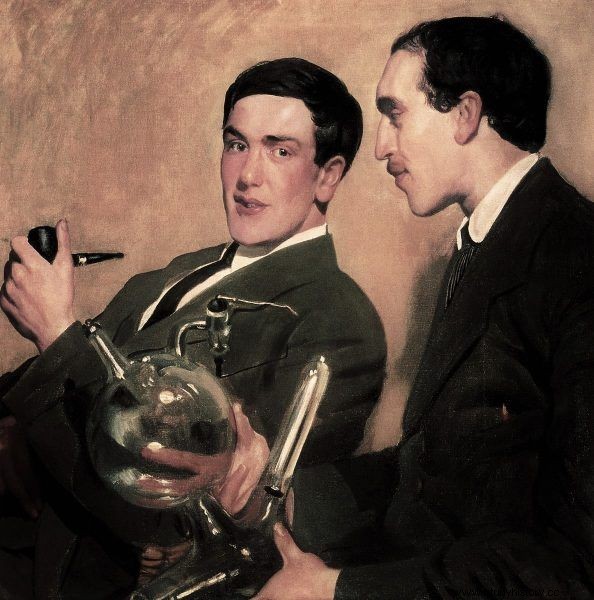
Two Nobel Prize winners:physicist Piotr Kapitsa (left) and chemist Nikolai Siemonov in a painting by Boris Kustodiev (public domain).
Despite efforts, the Council Country was still one step behind the leading research centers in Europe and the United States. New solutions appeared on the horizon, using, inter alia, the helium superfluidity discovered by Kapica or using nuclear energy - write Goworscy.
The fact that a Soviet scientist works for the glory of a foreign laboratory could not please Stalin . In 1934, Rudolf Ivanovich Abel, an agent of the secret services, was to appear at Kapica's residence. Apparently, it was he who persuaded the scientist to visit Moscow - some say that he was to visit his parents there. On the spot his passport was taken and it was announced that he was working for the Soviet motherland from now on.
There were protests of course. Rutherford wrote to Stalin, among others, demanding that the worker be released. In response, the following reply was sent:"it is fully understandable that England would like Mr. Kapica and that the Soviet Union would also like Mr. Rutherford" - we read in "Scientists from under the red star".
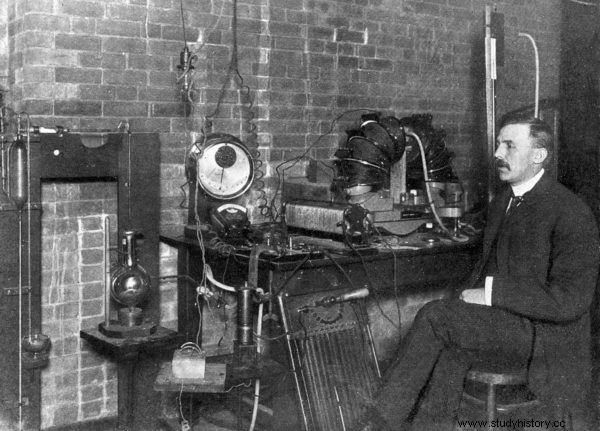
The efforts of the Nobel Prize winner in chemistry, Ernest Rutheford, were of no avail. His former associate Piotr Kapica was unable to return to Cambridge (source, license:CC BY 4.0)
Kapica believed that he would be smarter than the Bolsheviks - he demanded from the authorities working conditions at the level of those prevailing in the British laboratory. But for Stalin, nothing was impossible ... With the expenditure of enormous efforts and resources a center was established in Moscow which was a faithful copy of the Cambridge Institute . Not only laboratories have been reconstructed, but even the layout of apartments intended for physicists.
Although so much effort was put into providing Piotr Kapica with working conditions, did not hesitate to release him and put him under house arrest when after the war he came into conflict with the creator of the Soviet atomic bomb Kurchatov and Lavrenti Beria. The one who reached out to him at that time was another eminent physicist, Sergei Wawilov.

Sergey Vavilov and his Nobel Prize winners
Although Kapica had previously ridiculed the works of Wawiłow, the latter did not hesitate to use his own funds to equip the laboratory to a Nobel Prize winner who had fallen out of favor. When asked why he was helping the enemy, he replied: "Please take this as the revenge of an intelligent man."
This situation reflects the character of a physicist well - apart from everything else, he had the best of Science at heart. For this purpose, he was able to compromise with the authority by giving it what it expected of him.
Sergey was the president of the USSR Academy of Sciences and the head of the Lebedev Institute of Physics. Although before each conversation in the Kremlin, he was terrified of a happy return home , in honor of the Generalissimo he gave peans. "The coryphaeus of science", "the scientific genius of Stalin", "the science of the Stalinist era" - such terms could be heard from the lips of a physicist.
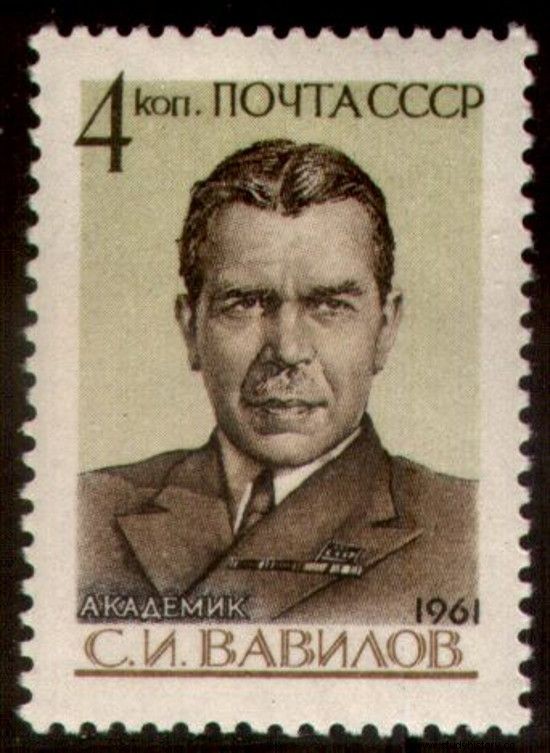
Sergey Wawiłow, an educator of the Soviet Nobel laureates, found himself in the Soviet scientific community. Unfortunately, the same cannot be said for his older brother Nikolai… (public domain).
Although his achievements impressed scientists around the world, Sergei Wawilov never received the Nobel Prize for his achievements. But the institute he headed became a real forge of Nobel Prize winners - under the wings of the researcher, as many as seven winners of this prestigious award developed their careers a:Pavel Cherenkov, Ilya Frank, Igor Tramm, Nikolai Basov, Alexander Prokhorov and Vitily Ginzburg - and the Nobel Peace Prize winner Andrei Sakharov.
Did such successes give Wawiłow a special position in the Soviet Union? Not completely. Although he himself was able to skillfully maneuver in the slippery, hypocritical world of Soviet science, there was little he could do for his beloved brother, the eminent biologist Nikolai Vavilov, who did not have this ability.
Nikolai for a long time belonged to the elite of Russian scientists. For seven years he headed the Institute of Genetics of the USSR, belonged to the Academy of Sciences of the USSR. His goals were lofty - he worked to save the world from hunger.

When in 1958 Pavel Cherenkov (first from left), Ilya Frank (center) and Igor Tamm were receiving the Nobel Prize in Physics, they stated that the late Sergey Vavilov deserved the award just as much (public domain).
He traveled all over the world, talked to the most enlightened scientists, read hundreds of books in different languages. How did Matuszka Rossija reward him for promoting the Soviet scientific achievements? Four hundred interrogations with a total duration of seventeen hundred hours, dying for several days in the cold and dying in camp conditions .
Sergei's contacts and his actions to save his brother, accused of treason after the denunciation of the competing pseudo-scientist Trofim Lysenko, were of no avail. Vavilov experienced many humiliations that were to make him realize one thing - for the Soviet authorities, the scientist was only a tool that the Red Tsars had at their disposal.
Bibliography:
- Czapski Józef, In inhuman land , Znak publishing house, Kraków 2011.
- Pacepa Ion Mihai, Russian Spies of the Future , [access:20/09/2016].
- Panas-Goworska Marta, Goworski Andrzej, Scientists from under the red star , Polish Scientific Publishers PWN, Warsaw 2016.
- Stockholm Fundacja im. Alfred Nobel Prize - official website of the Nobel Prize [access:20/09/2016].
Buy the book on the Publisher's website

